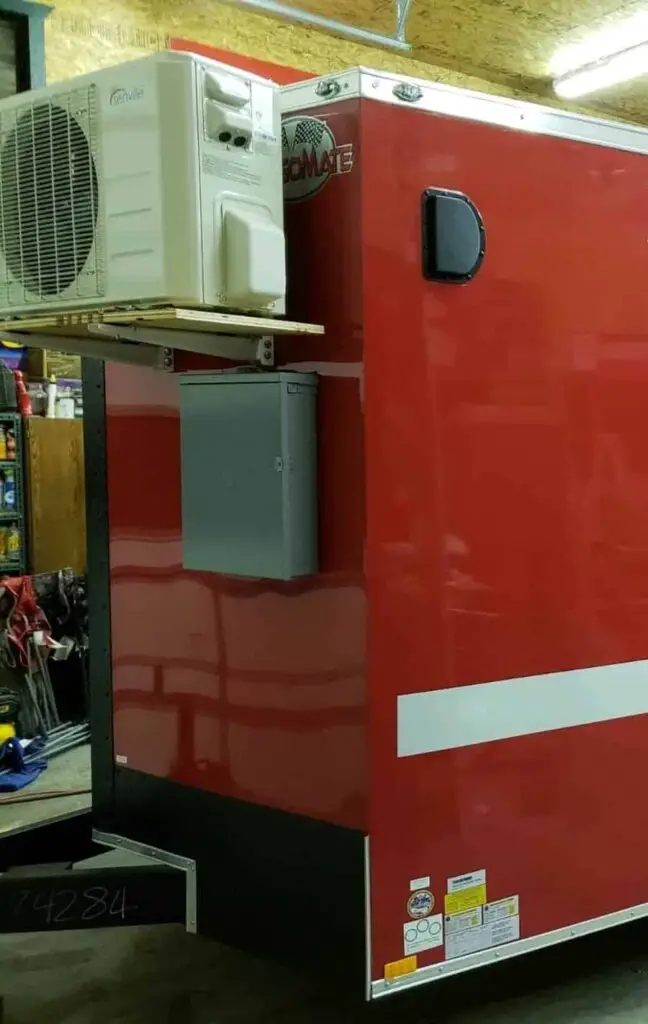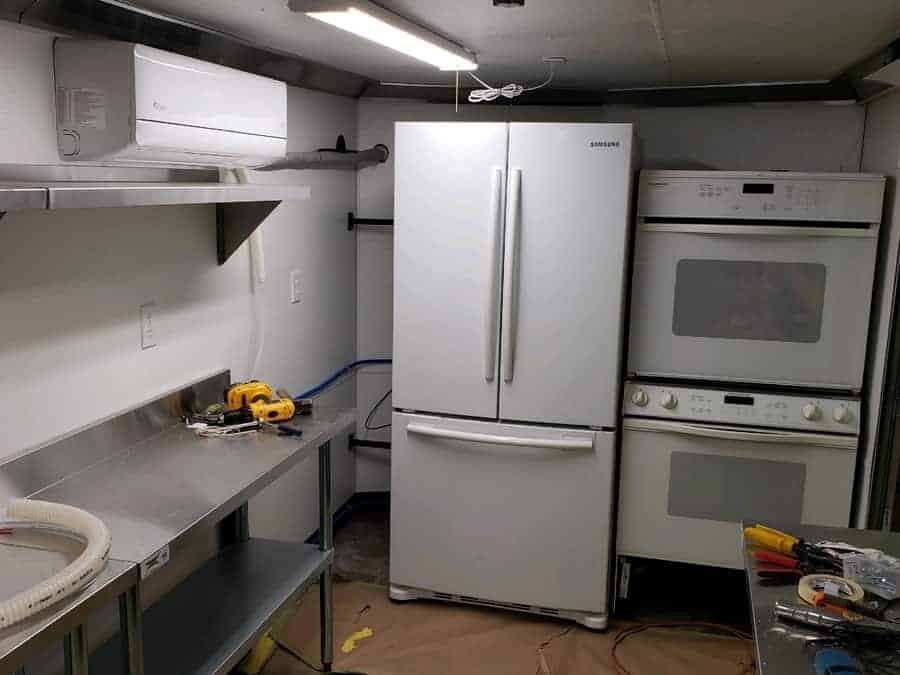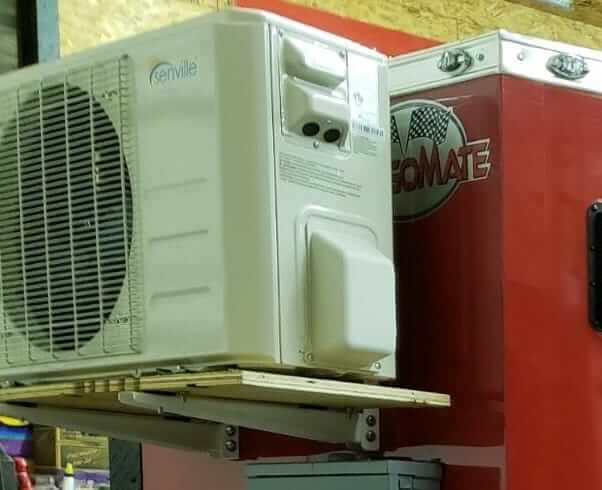This is probably considered a cool food truck or kitchen trailer idea. Some important things to consider before installing a ductless mini split AC or any food truck AC unit.
- The climate in your area
- Appliances that produce heat
- Your food cart’s total power consumption
- Power availability
There are some in my industry that look down on me for promoting DIY projects. I remember once, being a teenager, my dad was an electrician at the Pelton Dam. I spent a couple of summers there running wild. We stayed at the marina that was barely developed.
They gave me a boat and a gun and said explore. At the marina was a maintenance guy and in his absence, others were gossiping and said “That guy can fix anything”
That rang loud in my head. I wouldn’t say I can fix anything, but I take on a lot of projects with no experience.
This is your opportunity. Enough information and resources are available to conquer almost any new venture, especially a food truck air conditioner. Follow the installation instructions, watch a few YouTube videos, and get it done.

The climate in your area and the heat produced by your cooking equipment may be more than any normal AC or heat pump unit can handle.
We installed this 9000 BTU mini split on this food cart going to Facebook’s Data Center site in Prineville.
It had two ovens and a pop machine that produced a lot of heat, but the girls inside kept cool even on the hottest days.
I would say the climate in our area is moderate. Over 100 degrees occasionally and below zero sometimes.

Placement of the indoor unit is critical. Keep it as far away from work areas as possible. The direct air on workers will be too extreme for continued use. You’ll just have a bunch of complainers or thermostat tweakers.
What Size Mini Split Do I Need?
Learning how to stay cool on a food truck can be tricky.
In some areas of the world humidity is no problem. If humidity is low, oversizing an air conditioner would work well. However, too many BTUs of cooling in a high-humidity area would shorten run time and not remove much moisture from the air.
The true and only way to know what size ductless you need can be determined accurately by using the Manual “J” method of calculating heat load.
Most HVAC companies will use this or know someone who does. Or you can do your own load calculation at https://www.loadcalc.net/. You’ll have to play with the program as it wasn’t built to calculate the load for a one-room cook shack.
In some areas today, the Manual “J” method is required before permits are issued. Don’t know if this requirement would apply to a food truck.
The Manual “J” considers everything related to the load on an AC unit, from where you live to every heat-producing appliance and even the number of workers sweating profusely to make you a buck.
There is more than one option when considering how to cool a food truck. Rooftop AC units for a food truck or standard through-the-wall units, also called window units.
The climate in your area and the heat produced by your cooking equipment may be more than any normal AC or heat pump unit can handle.
Can I Install Ductless AC Myself?
The products are available for you to cool your food trailer. They bypass all the technical stuff that technicians say only they can do. It is old technology, actually.
The normal process in connecting the refrigeration tubing between the indoor and outdoor units is to connect the lines with flare fittings. Sometimes techs will weld the lines as they are being purged with nitrogen.
The nitrogen is in the lines to remove any oxygen that will contaminate the lines if heated to the temperatures required by welding.
But now with the reinvention of the wheel and the use of quick connects, anyone can do this. There are no special tools, no purging, no evacuation requiring the use of a vacuum pump, and no gauges needed.
You put the units in place. Run the refrigeration tubing and tighten the quick connects. But finding a short enough line set for a food truck is hard. Check installation instructions so you don’t cut it off too short.
Now power up the unit, and you have air.

